WRITEOUT 22
WriteOut 10.04.22 Daily Walk Digital Journal
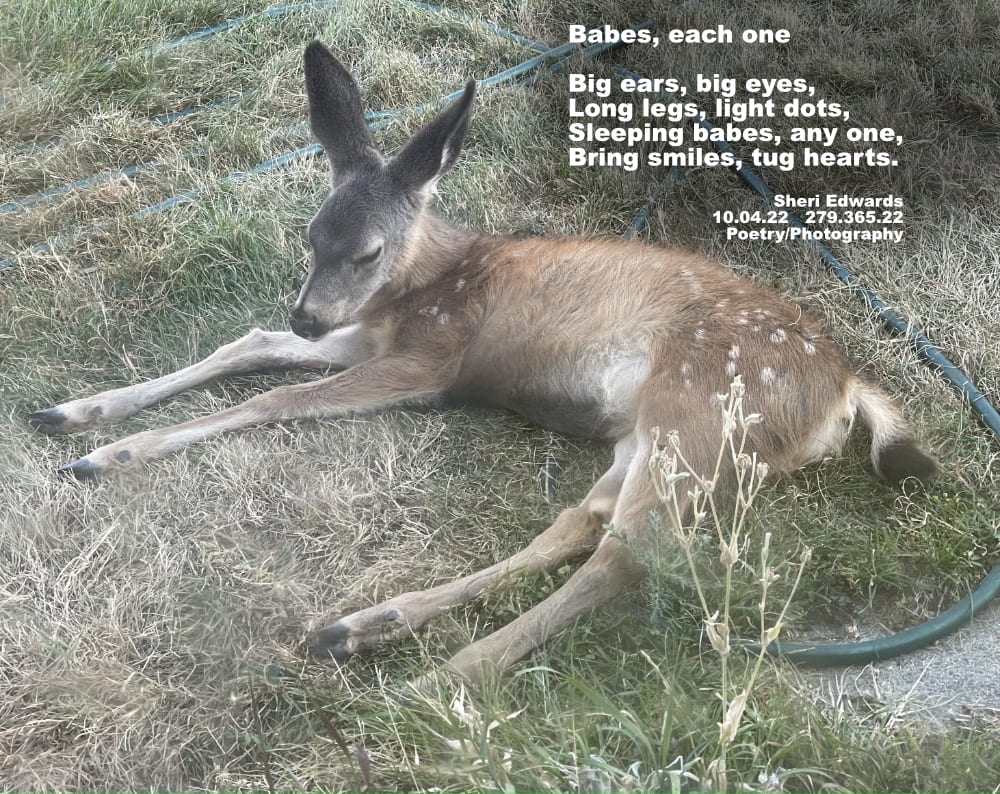
About the Post
Today’s journal includes sketches from previous walks with information on the creatures, as well as this poem and story about the little fawn and mule deer in our yard. In the information section, I also share some search tips.
The Mule Deer
Yesterday in the warm afternoon sun, we looked out our living room window to see this napping mule deer fawn. We did not see its mother any where, but she was probably around the corner eating crab apples and pears from our trees. Despite the mess they leave and the fact they eat most any flower we plant, we love seeing them in the yard, where all the neighborhood cats run between their legs– because we can all get along.
My husband witnessed something interesting later in the day. Besides the deer in the backyard munching on the apples and pears, a flock of turkeys also pecked in the grass along the side yard. A neighborhood cat we call HiPi [it’s piebald and we say “HiPi” when we see him], chased the turkeys. The deer perked up and then walked over to where the turkeys were and the cat was and seemed to look at the cat as if to say, “That’s not OK.” If you think about it, the turkey wandering with the deer can also act as warnings should danger arrive– and are easier to catch than deer, perhaps.
When animals mix with humans, it seems they adopt a different set of protocol with one another– learning to adapt to one another and with the people of whom they still keep their distance.
But the little fawn– like all young ones, with big ears and big eyes tug at our hearts.
Babes, each one
Big ears, big eyes,
SHERI EDWARDS
Long legs, light dots,
Sleeping babes, any one,
Bring smiles, tug hearts.
10.04.22 279.365.22
POETRY/PHOTOGRAPHY
The Sketches
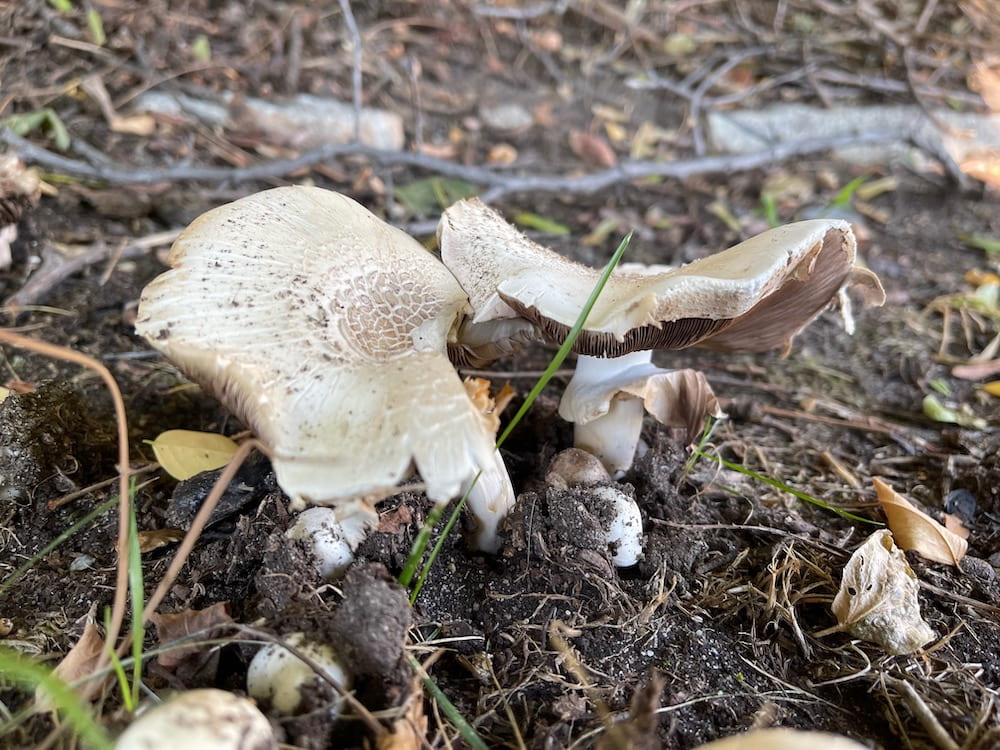
Oct 02 Day 2 Photo 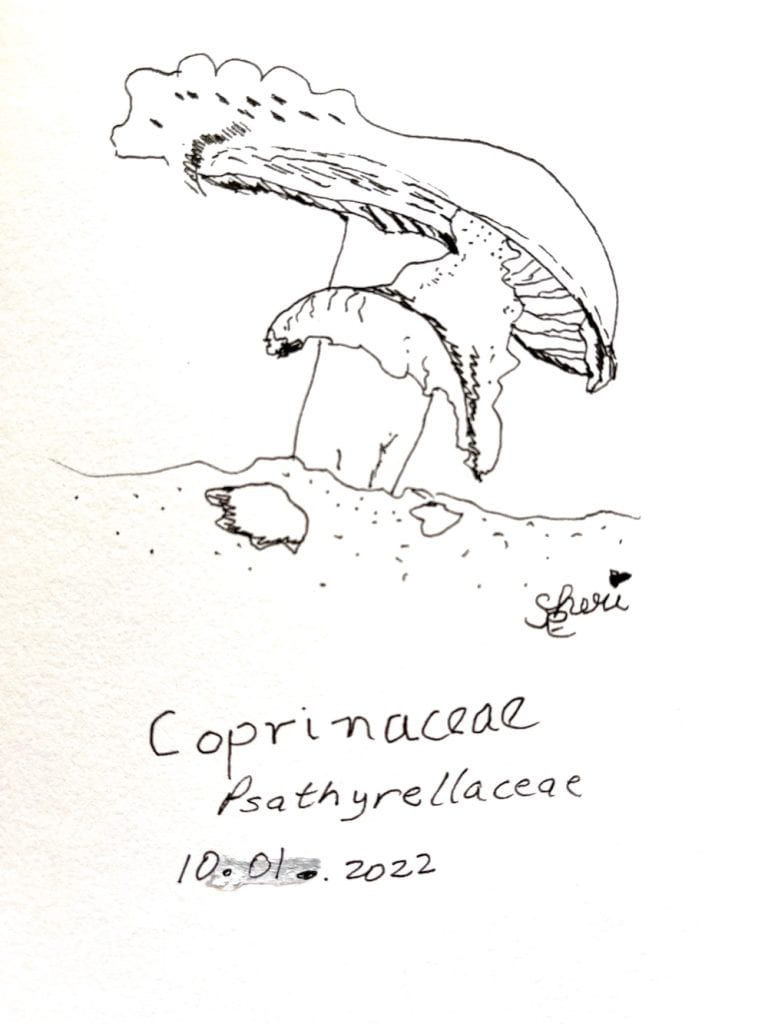
Sketch 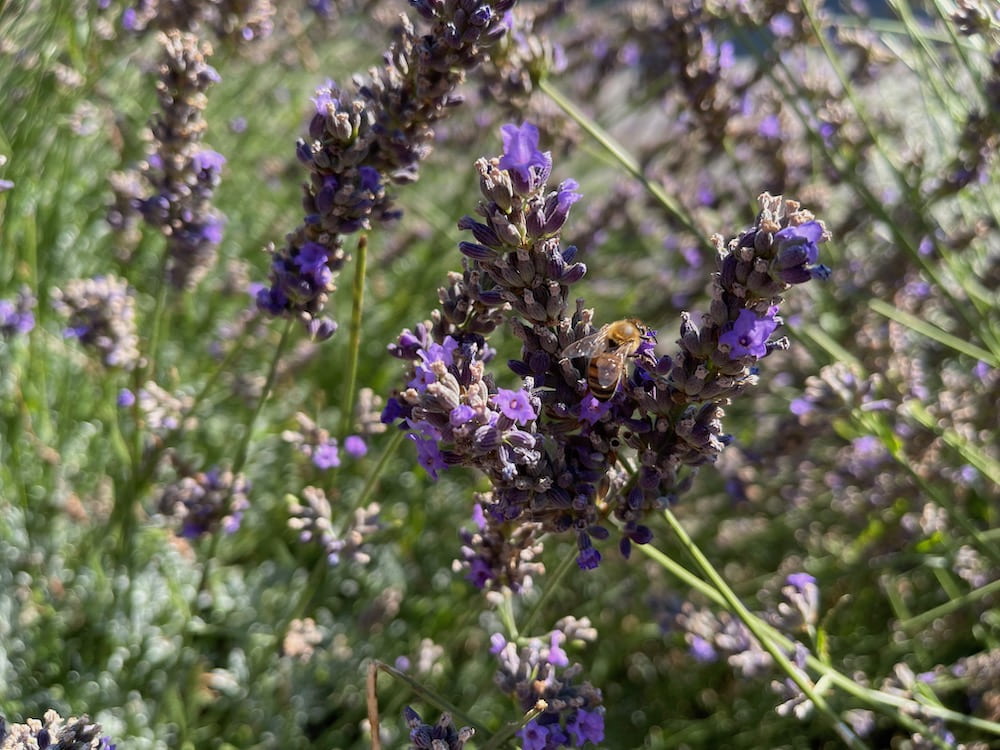
Bee on lavender 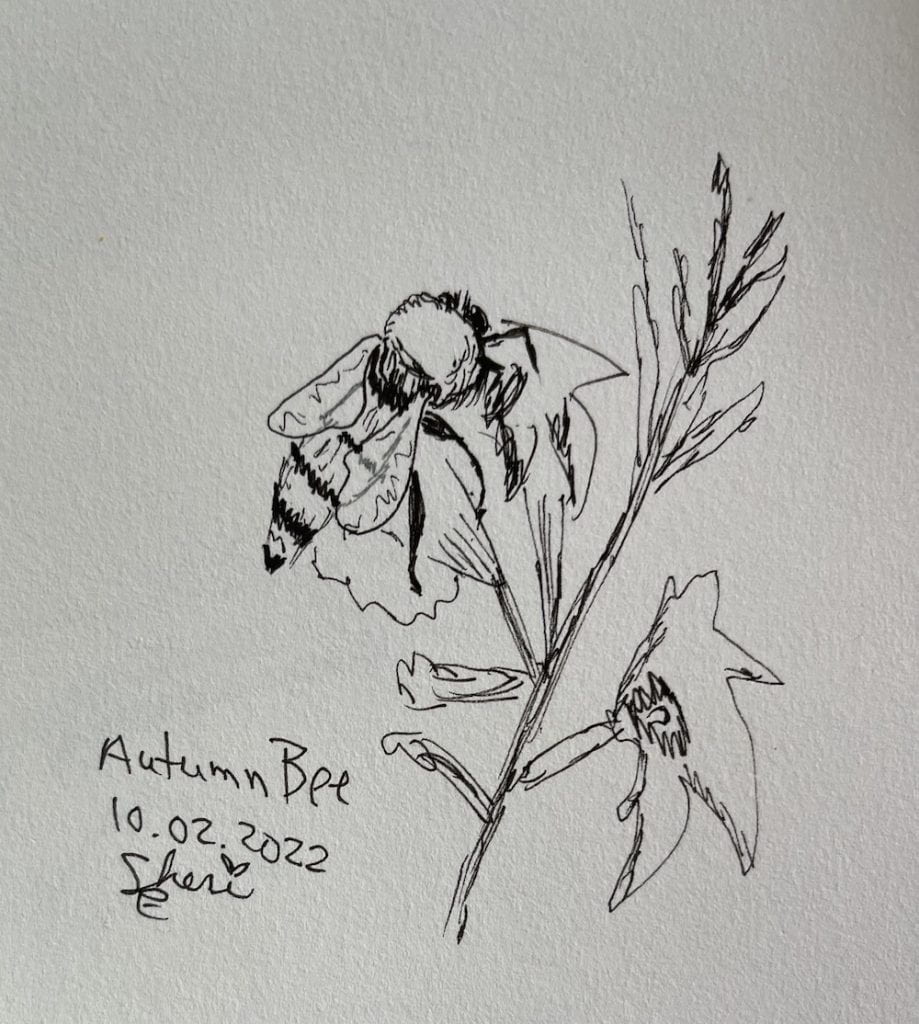
ink sketch of bee 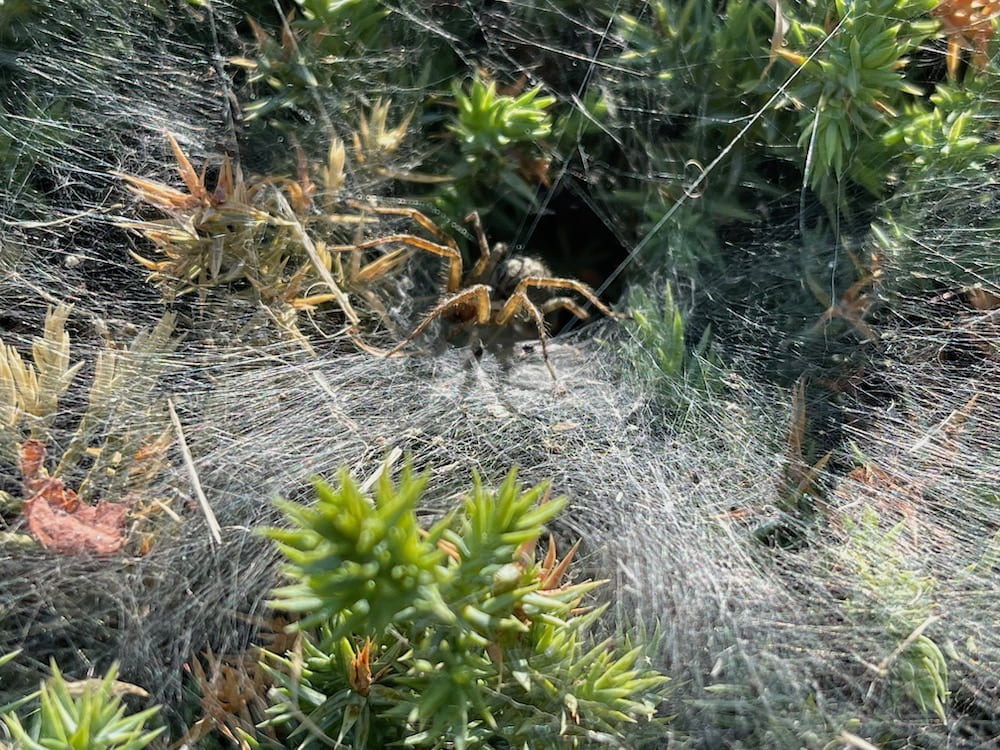
grass spider in funnel web 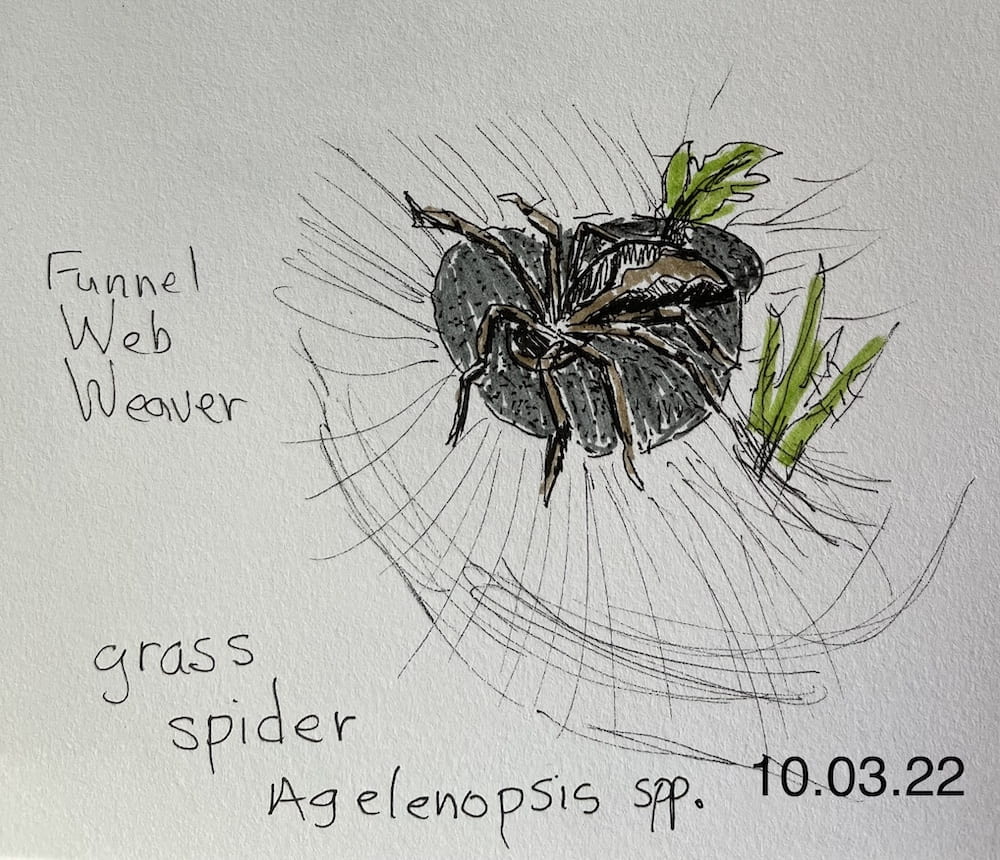
inked sketch of grass spider
Mushroom
I tried to sketch the mushroom I saw– the one on the right. I like the way it turned out. Sketching with ink means you’ll make mistakes, but the benefit is that soon you learn to recognize the shapes as well as learn to accept that we artists are not perfect.
The Picture This app provided this important warning:
• Attention
• Content feedback CAN NOT be used as any basis for EATING or TOUCHING ANY MUSHROOM. Some mushroom can be VERY POISONOUS, please purchase edible and touchable mushroom through regular channels.
It’s not easy identifying mushrooms, and so I never play around thinking I’m sure of one– I leave them alone and so should you.
Mushrooms are important for the cycle of life– for cleaning up the the things that have died. For general information see MUSHROOMS and DECOMPOSERS. And here’s an interesting review of mushrooms and their importance as a bridge from the dead debris to bring nutrients to the living trees: The Secret Underground Lives of Mushrooms.
For Public Domain images on Flickr, see this amazing gallery: Mushrooms [be sure to always check copyright license before using].
Bees
I sketched the bee on the lavender– it’s an autumn bee, one that lives in the cooler weather. I always end up drawing them too long, but, again, I keep trying.
There’s quite a bit to learn about bees.
Bees, of course, keep the world going– pollinating our flowering crops so they grow again. So much to learn about bees:
- US Forest Service booklet: Bumblebees
- Lovely booklet about North American Bees
- A bit about bees in autumn: phys.org
Spiders
A difficult sketch– I added color and darkened the lines to try to keep my spider visible in his “hole” in his funnel web. I have a bit more to learn about inking when all the parts are dark. But— I did discover, through drawing it and noticing its markings and colors, exactly what kind of spider this is.
My spider is a grass spider of the funnel weavers. They spin webs with a hole in the center as shown in the previous post. Below ls a list of places that explain about this spider.
- Identification
- Spiders in Washington — number 18 — scroll down or do a search [command/control F to search for key words]
- Spiders of Washington — page 4
Search Tips
To find my spider, I conducted a reverse image search on my computer to help me out, using my own image. Google shows you how– on computer, iOS, or Android. So taking pictures of your plant or bug helps you find out what it is.
One way to find resources in your state is to do the search with you state’s name. So I searched for “grass spider funnel web weaver WA State” to find relevant resources — which aren’t always the top ones shown. Be sure to read the “snippets” provided by Google to find relevance. Once you’re on the webpage, do a “Control / Command F” key word search to find the topics you need. See Eric Curts page on this and one other tip: Eric Curts Search Tips. If you search for “command control F iOs Android” you will find how to do this on smart devices.

What have you discovered today in your neighborhood — and how did you research to find out?
